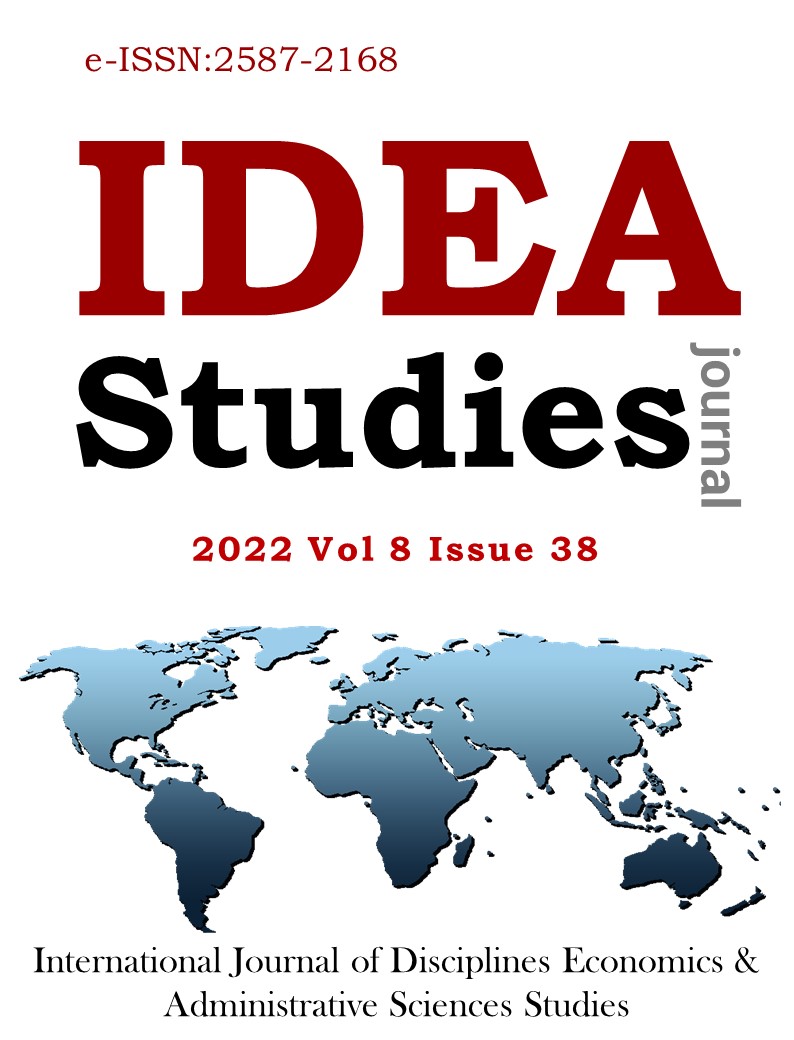Evaluating The Level Of Fear Culture Perceived By Employees And Its Management In Terms Of Various Variables: The Case Of Adiyaman City
Author :
Abstract
The purpose of this research is to examine the level of fear, fear culture and management perceived by the employees in the enterprises they work in, in terms of various variables -age, gender, marital status, working time, educational status, type of company. The research was carried out with 386 employees in Adıyaman Organized Industry. Data; The question/information form about the existence and management of fear culture was collected using the fear culture scale consisting of 14 questions. In accordance with the purpose of the research, descriptive statistics, independent sample t-test from parametric tests and analysis of variance were used. As a result of the analysis, it has been determined that although the culture of fear is not at a very evident level in the enterprises, it exists and that the employees can easily manage their fears. It is estimated that this result will be a vital benefit for the successful existence of the enterprise to be able to predict the causes, source and possible consequences of the fear culture in the enterprises.
Keywords
Abstract
The purpose of this research is to examine the level of fear, fear culture and management perceived by the employees in the enterprises they work in, in terms of various variables -age, gender, marital status, working time, educational status, type of company. The research was carried out with 386 employees in Adıyaman Organized Industry. Data; The question/information form about the existence and management of fear culture was collected using the fear culture scale consisting of 14 questions. In accordance with the purpose of the research, descriptive statistics, independent sample t-test from parametric tests and analysis of variance were used. As a result of the analysis, it has been determined that although the culture of fear is not at a very evident level in the enterprises, it exists and that the employees can easily manage their fears. It is estimated that this result will be a vital benefit for the successful existence of the enterprise to be able to predict the causes, source and possible consequences of the fear culture in the enterprises.
Keywords
- Adams, B. D., Thomson, M. H., vd., (2004), Organizational trust in the Canadian Forces. Defence Research and
- Adams, B. D., Thomson, M. H., vd., (2004), Organizational trust in the Canadian Forces. Defence Research and Development, Canada.
- Altan, Z. (2009), Kişilerarası İletişimde Bir Sosyal Baskı Düzeneği: Korku Kültürü, İletişim Fakültesi Dergisi, Malatya.
- Asunakutlu, T., “Örgütsel Güvenin Oluşturulmasına İlişkin Unsurlar Ve Bir Değerlendirme”. Muğla Üniversitesi Sosyal Bilimler Enstitüsü Dergisi, 2002, 1, (9), ss. 1- 13.
- Aykaç, B. (1999). İnsan Kaynakları Yönetimi Ve İnsan Kaynaklarının Stratejik Planlaması, Ankara, Nobel Yayın Dağıtım.
- Cüceloğlu, D. (2002), İletişim Donanımları, İstanbul: Remzi Kitabevi.
- Duhm, D. (1996), Kapitalizmde Korku, (Şölçün, S.çev.), Ankara: Ayraç Yayınevi.Frank, F. (2014), Korku kültürü, (Yıldırım, B. çev), İstanbul: Ayrıntı yayınları.Güler, A. (2008), Türk Toplumunda Korku Kültürü, Bolu: Punto Tasarım.
- Kağıtçıbaşı, Ç. (1992). İnsan ve İnsanlar, 8. Basım, Evrim Basım Yayım Dağıtım, İstanbul.
- Kamer, M., (2001) Örgütsel güven, örgütsel bağlılık ve örgütsel vatandaşlık davranışlarına etkileri (Yayımlanmamış yüksek lisans tezi), Marmara Üniversitesi, İstanbul (Türkiye).
- Kırel, Ç. (1998), Örgütlerde Güç Kullanımı, Çalışanların Algıladıkları Güç ve Tepkileri Üzerinde Bir Uygulama, Eskişehir: Anadolu Üniversitesi Yayınları, 1031.
- http://www.dersimizkimya.com/egitim_makal_pdf/nedendegisim.pdf (10/01/2015).http://www.mba.co.za/article.aspx?rootid=6&subdirectoryid=1204(17/01/2015)Mannoni, P. (1992), (çev: Işın Gürbüz), Korku, İstanbul: İletişim Yayınları.
- Mealiea, L. W. (1978). Learned Behaviour: The Key to Understanding and Preventing Employee Resistance to Change, Group and Organization Studies,
- Özkan, R. (2010), Türk eğitim sisteminde himayeci değerler: İlköğretim ders kitapları örneği, Uluslararası İnsan Bilimleri Dergisi, 7,1.
- Sısson, S. (1985). Managerial Risk Taking, Training and Development Journal, January Press.





